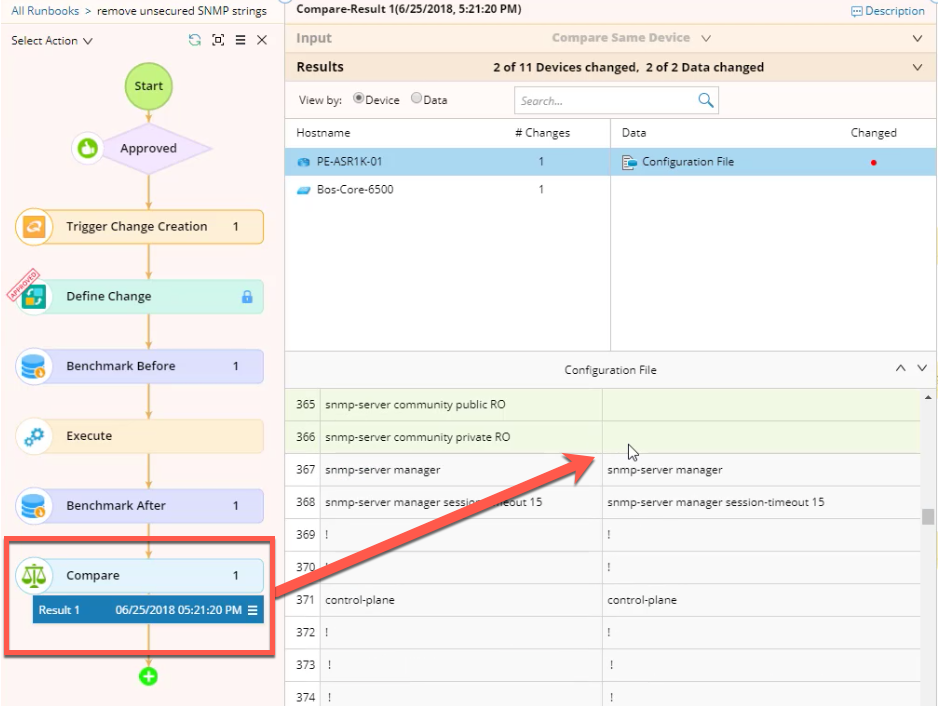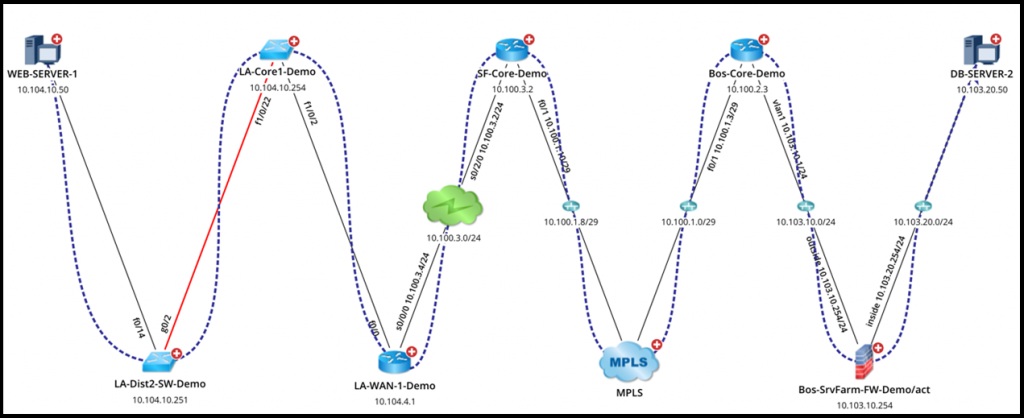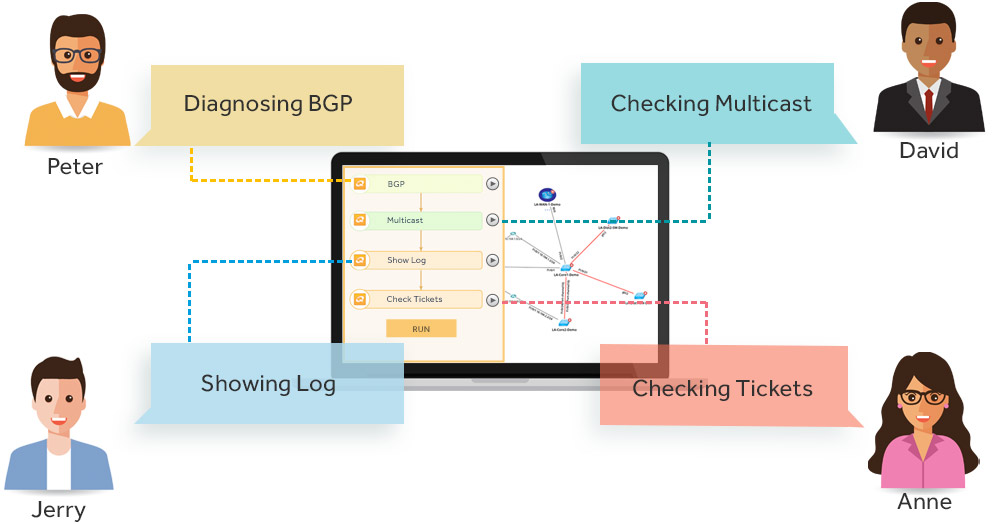 by Feb 16, 2019
by Feb 16, 2019
Your organization has been part of a merger or acquisition, and your IT group has inherited an entire network. This involves rolling out new network technology, and operationalizing the existing infrastructure while ensuring business continuity. Not an easy task.

Typically, the process of integrating acquired networks is broken down into four distinct phases. With NetBrain, organizations are better equipped to tackle these phases to keep the business fully functional during a network merger or acquisition.
Phase 1: Target Network Infrastructure Assessment
During the first phase, it is critical to identify and fortify any missing or limited documentation of the acquired network infrastructure. Limited visibility into the existing design and new application requirements and traffic flows can create widespread problems for the team as you integrate the networks together.
Limited visibility into the existing design and new application requirements and traffic flows can create widespread problems.
NetBrain can assist in these areas by automating network diagrams which provide the level of detail that is critical for an efficient integration. With NetBrain, teams can automate documentation, creating accurate maps of all devices and links with color coded legends highlighting current capacities. Additionally, it allows network teams to create asset reports listing out all network elements in the existing environment and how they are connected. Dynamic Network Maps have virtually infinite detail to document any aspect of design.

Phase 2: Unified Network Design Review
Identifying duplicates is a painstaking process during a network acquisition. However, if not done correctly, it can lead to outages that severely impact network performance. With NetBrain, engineers will be able to visualize and assess the network as if they were merged before any potential outages will be created. Duplicate addressing is easily identified, as are protocol conflicts and non-compliance.

Phase 3: Physical and Logical Network Merge
Validating proper network operation after the change is often not fully completed due to time constraints or short maintenance windows. This is largely due to the manual nature of this activity which is extremely time-consuming and error-prone.

By dynamically mapping traffic flows with NetBrain, design teams can better understand critical application flows so they can accommodate these applications with the new design, and minimize disruption when the merged network goes live. Whereas manually mapping these flows can take weeks, NetBrain can map each application path instantly and they can be monitored through the change process.
Phase 4: Unified Network Operations
It’s important to remember that during a network acquisition attrition can be a very real problem and that critical knowledge may be lost throughout the process. Executable Runbooks can digitize the tribal knowledge and internal processes so that network teams are able to collaborate efficiently.

Without a proper baseline of both the stand-alone and merged networks, it’s difficult to detect anomalies. Network monitoring tools are great for identifying issues, but provide little insight into the cause of the problem. Organizations that use NetBrain are able to leverage Dynamic Maps and Executable Runbooks to get to the root cause of the problem exponentially faster.
Check out Eyvonne Sharp’s blog You’ve Acquired a Network, Now What?




